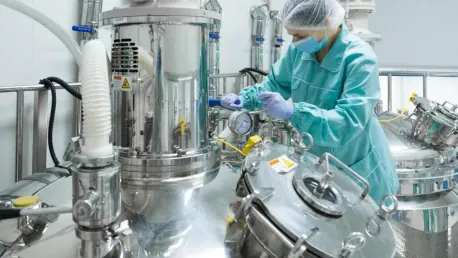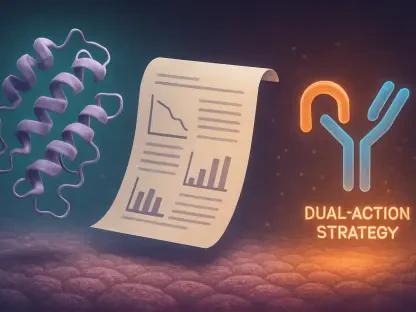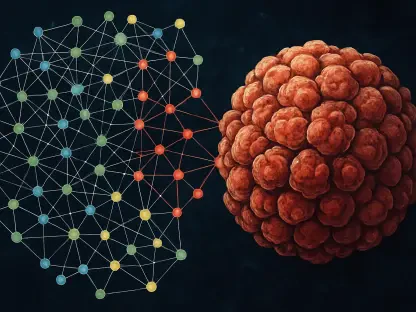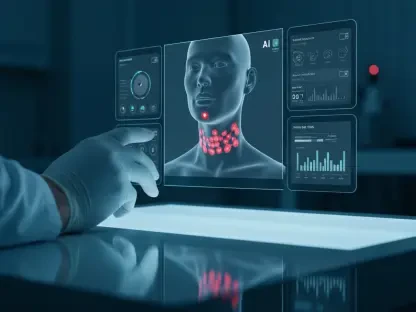The biopharmaceutical industry is undergoing a significant transformation, driven by the need for speed, safety, and cost-efficiency in therapeutic production. The advent of new modalities like cell and gene therapies has added layers of complexity to the already intricate production pipelines. As these advanced therapies gain traction, companies face immense pressure to innovate while ensuring high quality and scalability in their manufacturing processes. Navigating this evolving landscape requires strategic investment in research and development (R&D) and the adoption of cutting-edge technologies.
Demand for Speed and Cost-efficiency
The relentless drive for faster and more cost-effective therapeutic production is the primary driver of innovation in biopharmaceutical manufacturing. Companies like Thermo Fisher Scientific are investing heavily in R&D to address these needs, aiming to expedite process development and ensure scalability. With new therapies continuously emerging, the need for speed and cost-efficiency has never been more critical. These R&D investments are not solely about cutting costs but also aim to enhance the overall efficiency and effectiveness of the production pipeline. This focus is setting new industry standards, compelling companies to adopt smarter and more agile manufacturing processes.
However, the quest for speed and cost-efficiency poses its own set of challenges. One of the primary issues is balancing the need for rapid production with the necessity for thorough quality checks. This is where innovative technologies and streamlined processes prove invaluable. Advanced manufacturing solutions help bridge the gap between speed and quality, enabling companies to bring life-saving drugs to market without compromising their integrity. The focus on speed and cost-efficiency is thus not just a trend but a fundamental shift in how biopharmaceutical companies operate, pushing them towards more efficient and scalable production methods.
Overcoming Challenges in Bioproduction
Biopharmaceutical companies face numerous challenges in swiftly and efficiently bringing life-saving drugs to market. A primary concern is the need for process streamlining. There is a critical need for technologies that create efficiencies in the manufacturing process, making it more streamlined and less prone to errors. These technologies help in reducing bottlenecks and increasing the overall throughput of the production pipeline. The aim is to develop a manufacturing process that is not only fast but also reliable and consistent.
Flexibility and scalability are other essential factors that biopharmaceutical companies must consider. Manufacturing solutions need to be adaptable to varied production requirements, ensuring that companies can scale up or down as needed. This is particularly crucial for startups and smaller companies that may not have vast resources. Being able to quickly adapt to changing demands can make a significant difference in time-to-market and overall production costs. Moreover, the ability to scale operations efficiently is vital for meeting the growing demand for biopharmaceuticals.
Contamination risks and high production costs are significant hurdles, especially in cell therapy. Contamination can delay the time-to-market for therapeutics, while high production costs can make these therapies inaccessible to many patients. To overcome these challenges, companies need to develop robust processes that minimize these risks. Sustainability goals add another layer of complexity. There is growing pressure to manufacture sustainably, using fewer natural resources and generating less waste. Companies are increasingly focusing on sustainable practices, aiming to reduce their environmental footprint while maintaining high production standards.
The Rising Role of Automation
Automation is becoming indispensable in addressing the challenges faced by biopharmaceutical manufacturers. It improves safety and consistency, reduces labor costs, and enhances the overall quality of cellular output. Automated systems help accelerate the manufacturing process and reduce human errors, which is particularly crucial in workflows that involve high-variable quality cells, such as those used in cell therapies. Automation ensures that each stage of the manufacturing process is performed with precision, thereby improving the overall efficiency of the production pipeline.
Real-world examples like the Gibco CTS DynaCellect Magnetic Separation System showcase the impactful role of automation in biopharmaceutical manufacturing. This system automates cell isolation and bead removal, creating cost efficiencies and reducing the potential for manufacturing failures. Such innovations are vital for streamlining complex workflows, ensuring consistent high-quality outputs, and reducing the time-to-market for new therapies. The use of automation in these processes not only makes them more efficient but also more reliable.
Automation is not limited to machines and robots; it also encompasses advanced software solutions that provide real-time data and analytics. These systems enable better decision-making and process optimizations, ensuring that manufacturing processes are both efficient and adaptable. By leveraging real-time data, companies can make informed decisions that improve the overall effectiveness of their production pipelines. This integration of physical and digital automation is setting the stage for a more advanced and efficient future in biopharmaceutical manufacturing.
Innovations in Cell Therapy Manufacturing
Cell therapy is one of the most promising areas in biopharmaceuticals, but it also comes with unique challenges. Innovations like the Gibco CTS Detachable Dynabeads represent a significant leap forward in overcoming these challenges. This next-generation platform allows for the active detachment of Dynabeads from target cells, offering greater control and consistency in delivering cells with desired characteristics. Such advancements address many pain points in cell therapy manufacturing, including process flexibility, compatibility with downstream steps, and scalability.
These innovations not only help reduce manufacturing costs but also deliver high cell purity and viability, making the overall process more efficient and reliable. The ability to control the detachment of Dynabeads from target cells ensures that the cells retain their intended characteristics, which is crucial for the effectiveness of cell therapies. As these technologies continue to advance, we can expect even more efficient and scalable solutions tailored specifically for cell therapy. This progress is crucial for bringing advanced therapies to patients faster and more reliably.
Furthermore, these advancements in cell therapy manufacturing are setting new benchmarks for the industry. They are encouraging more companies to invest in innovative solutions that address the complex challenges of cell therapy production. By focusing on flexibility, scalability, and compatibility, these innovations are paving the way for a more advanced and efficient future in biopharmaceutical manufacturing. The ultimate goal is to make cell therapies more accessible and effective, improving patient outcomes and advancing the field of biopharmaceuticals.
Future of Automation and Innovation
The future of biopharmaceutical manufacturing is looking towards an end-to-end closed and automated process that includes both physical and digital integration. This vision aims to monitor and control every aspect of the production pipeline, ensuring that each step is performed with utmost precision and efficiency. Such an integrated approach is expected to revolutionize the industry, making it possible to deliver high-quality therapies faster and more reliably.
Process Analytical Technologies (PAT) are set to play a significant role in this future. Established by the FDA, PAT aims to improve pharmaceutical development, manufacturing, and quality control through continuous monitoring and process optimization. These techniques enable real-time adjustments, ensuring consistent product quality and enhancing overall process efficiency. By providing real-time insights into the manufacturing process, PAT allows for immediate corrective actions, minimizing the risk of errors and improving the overall reliability of the production pipeline.
Thermo Fisher’s vision exemplifies this future, incorporating advanced technologies like real-time fermentation process control, magnetic sector mass spectrometry, and raw material identification. These systems work in unison to create a more reliable and efficient production process. By bridging the digital gaps and providing comprehensive automation solutions, the industry aims to achieve end-to-end closed and automated manufacturing processes. This integrated approach is set to become the standard in biopharmaceutical manufacturing, ensuring high-quality and efficient production.
As the industry continues to evolve, the integration of advanced technologies will become increasingly important. Companies that embrace these innovations will be better positioned to meet the growing demand for biopharmaceuticals. The future of biopharmaceutical manufacturing lies in the seamless integration of physical and digital processes, making it possible to deliver high-quality therapies faster and more reliably. This vision is not just about improving efficiency; it is about setting new standards for the industry and paving the way for future advancements.
Sustainability in Manufacturing
The biopharmaceutical industry is experiencing a major shift, motivated by the urgent need for speed, safety, and cost-effectiveness in therapeutic production. The emergence of innovative treatments like cell and gene therapies has introduced additional complexity to the already intricate production pipelines. As these advanced therapies become more mainstream, companies are under significant pressure to innovate while maintaining high standards of quality and scalability in their manufacturing processes.
To navigate this rapidly changing landscape, companies must make strategic investments in research and development (R&D). This means not only allocating resources to discover new therapeutics but also adopting cutting-edge technologies that streamline production and improve efficiency. The integration of advanced technologies is essential for tackling the multifaceted challenges that come with producing these next-generation therapies.
Furthermore, regulatory requirements add another layer of complication, pushing companies to stay ahead of compliance issues while accelerating their production timelines. Collaboration within the industry is becoming increasingly important, as sharing knowledge and resources can lead to faster and more effective solutions. In sum, the biopharmaceutical sector must continuously evolve, leveraging innovation and strategic planning to meet the demands of this new therapeutic era.









